$6.00 – $9.00
Wild Crabapples are not available for 2022/2023
The wild crabapple trees are grown from seed derived from Dolgo crabapples. These are not grafted trees. Therefore, each tree will be unique and one-of-a-kind new crabapple variety. If you click on the pictures, you will see many variations of fruit coming from dolgo seedlings. These trees will produce crabapples edible to grouse, turkeys, and, most importantly, the white-tailed deer. You will see many variations amongst each tree, such as fruit size, drop times, taste, disease resistance. Trees grown from malus dolgo will typically improve the disease resistance and produce a great abundance of crab apples. For a short video on our Wild Crabapples, Click Here.
These will grow a 20’+ tall tree and do well in just about any soil type and condition. Planting wild crabapple trees is an excellent choice for feathered field edges or if you have a vacant field and looking to provide a food source falling from above. Create a crabapple thicket when spacing them 10′ to 15′. These are great for many habitat improvements in creating a food source for all wildlife. When grafting trees planted for wildlife, Malus Dolgo also makes an excellent rootstock, possibly the best rootstock. The Wild crabapples for sale are above the grade for rootstock. They are of bigger diameter and better rooted. These are not conservation-grade trees. These are pruned to 2′-3′ with 3/8”+ in diameter and very well-rooted, or you can select 3′ – 4′ with the terminal bud attached. Suitable for plant hardiness zones 3 – 8.
Note: These Are Dolgo X Dolgo. You will see variations from the original Dolgo but variations that make significant habitat improvements! You can see in the pictures the different variations of fruit grown from Dolgo. These can be grown in tree tubes and when a tree of this vigor is to be magnified in mass plantings allows for something exceptional if you’re looking for that crabapple thicket with fruit constantly dropping.
Spring Shipping Only/ Select Your Shipping Date at Checkout
For 2-3′ only
Bulk Discount 20 trees $3.75 each
50+ trees $3.25 each.
Description
The wild crabapple Seedlings are grown from seeds derived from Dolgo crabapples. Therefore, each tree will be unique and one-of-a-kind new crabapple variety. These trees will produce crabapples edible to grouse, turkeys, and deer. There will be many variations amongst each tree, such as fruit size, drop times, taste, disease resistance. Trees grown from Dolgo will typically improve the disease resistance and produce many crab apples.
These will grow a 20+ tall tree and do well in just about any soil type and condition. Planting Wild Crabapple Trees is a good choice for feathered field edges. These are great for habitat improvements in creating a food source for all wildlife. When grafting trees planted for wildlife, Malus Dolgo also makes an excellent rootstock, possibly the best rootstock. The Wild crabapples for sale are above the grade for rootstock. These are not conservation-grade trees. These are pruned to 2′-3′ with 3/8”+ in diameter and very well-rooted. Suitable for plant hardiness zones 3 – 8.
These Are Dolgo X Dolgo. You will see variations from the original Dolgo, but variations make significant habitat improvements by adding diversity. You can see in the pictures the different variations of fruit grown from Dolgo. These can be grown in tree tubes and when a tree of this vigor is to be magnified in mass plantings allows for something exceptional if you’re looking for that crabapple thicket with fruit constantly dropping.
PLANTING INSTRUCTIONS FOR WILD CRABAPPLE TREES (malus dolgo)
Plant at least two different Wild Crabapple Trees within proximity to each other to ensure pollination. Plant all apples and crabapples in moist, well-drained soil. A soil pH between 5.8 – 7 with adequate nutrient levels will ensure optimal growth.
If you have not completed a soil test, click here and improve your soil. I would highly recommend doing so. However, if you are not going to, I would recommend mixing 1 ounce for every three sq ft of 0-20-20 granular fertilizer in your soil at the time of planting. The first number tells you a percentage of nitrogen contained in the fertilizer. Nitrogen applied directly to the tree’s roots will cause death to your tree. Make sure the first number is zero.
Nitrogen is very mobile in the soil, and you can apply a small of nitrogen the following year. The 2nd and 3rd numbers are Phosphorus and Potassium. Apply these two nutrients at or well before planting because they are immobile in the soil. They will need to be mixed in through the soil. We recommend completing a soil test and making amendments for best results. We recommend applying 1 lb of 10-10-10 for every inch in diameter your tree is. Tripple 10 fertilizer should be applied in the spring the following year and each year after planting.
Wild Crabapple Trees requires a minimum of 6 hours of sunlight for growth and fruit production. Space trees 20′ apart. Use cages or vented tree tubes of at least 5′ to protect your trees. This will ensure your deer eat your fruit in a few years and not your trees this year.
SHIPPING/PICK UP
Shipping to Plant Hardiness zones 4 – 8. We begin shipping Wild Crabapple trees in mid-March on Mondays as temperatures in my area allow and continue until the last Monday in April.
Dormant bare root crabapple trees are best planted in spring, while trees in your area are still dormant. You can select your ship date at checkout. If you are picking up your trees, the first week in April is perfect for planting in Pennsylvania. Please call or message me to make an appointment to pick your trees up.
For More Information Visit:
Additional information
| Weight | 6.5 oz |
|---|---|
| Dimensions | 34 × .25 × .25 in |
| Size | 2-3', 3-4' |
Only logged in customers who have purchased this product may leave a review.

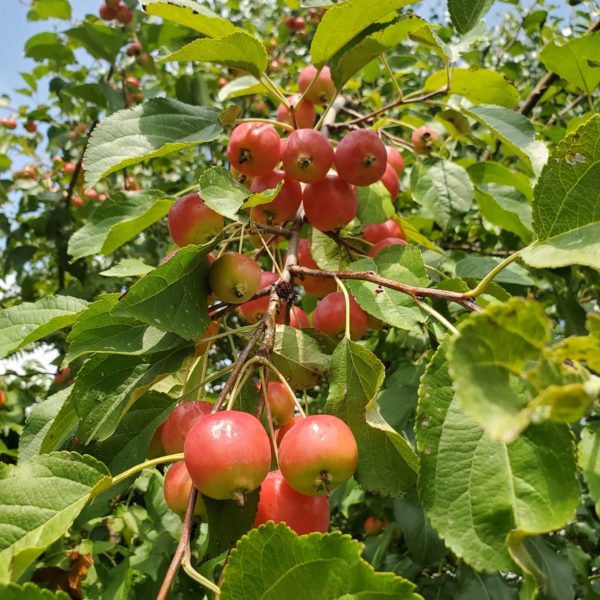







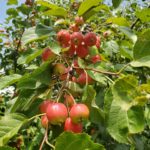







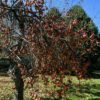
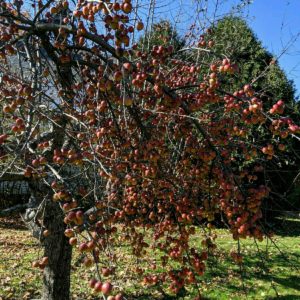
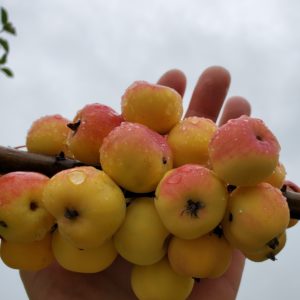
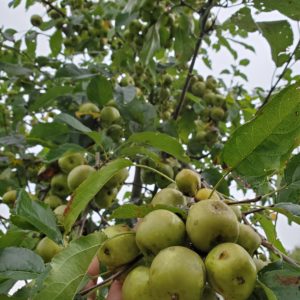
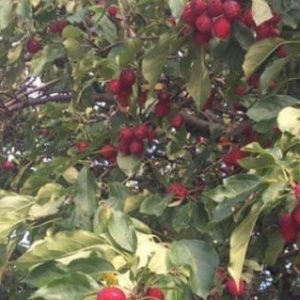
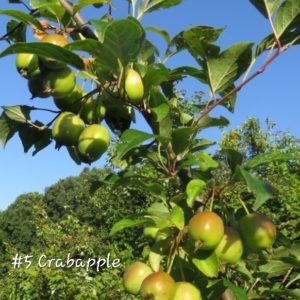
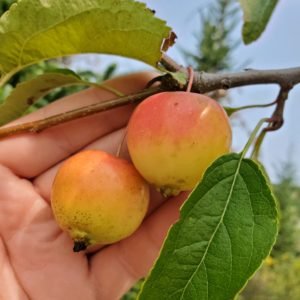
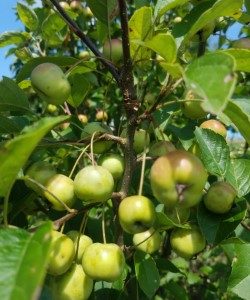
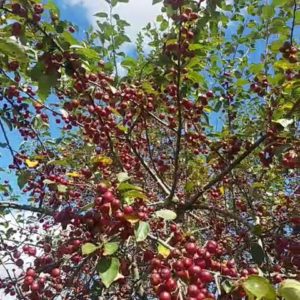
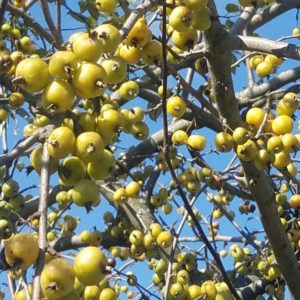
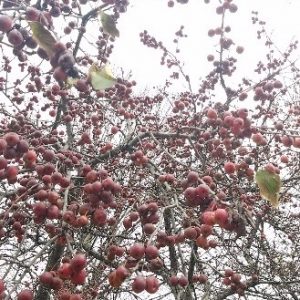
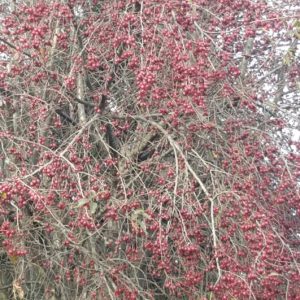
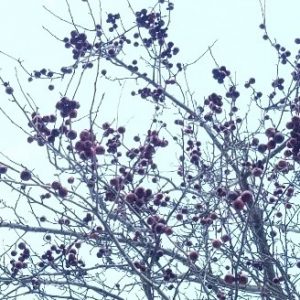
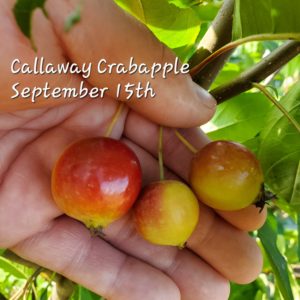
 by
by
Reviews
There are no reviews yet.